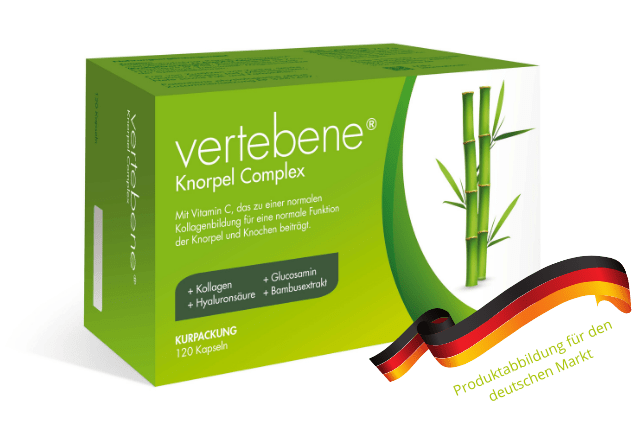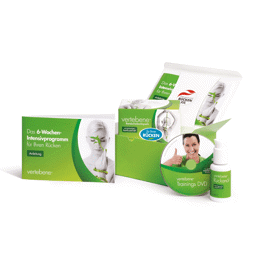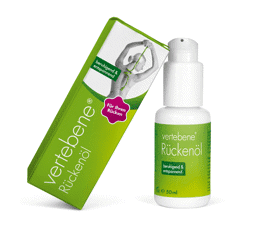
Vertebene® Cartilage Complex
BECAUSE YOUR BACK CARRIES YOU THROUGH LIFE!
New Design, Proven Content
The valuable nutrient combination developed by experts. With a patented physiologically active composition.
Vertebene® Cartilage Complex is a valuable dietary supplement with vitamin C, which contributes to normal collagen formation for normal cartilage function.
Walking, standing, maintaining an upright posture, and much more would not be possible without our bones, muscles, and joints. Together, they form our musculoskeletal system.
To enjoy movement throughout our lives, we must take care of the health of our joints, cartilage, and bones in particular.
Vertebene 6-Week Back Training Guide + DVD
Strengthen your back in just 6 weeks! The **Vertebene 6-Week Back Training Guide + DVD** offers targeted exercises to relieve tension and improve mobility. Eas…
17,50 € *
VERTEBENE® Intensive Program, Intensive Pack, DVD, Brochure, Back Oil
The VERTEBENE® intensive program strengthens and relaxes your back with an effective combination of targeted exercises (DVD), valuable back oil, and an informa…
65,90 € *
VERTEBENE® Back Oil 50ml
The VERTEBENE® Back Oil 50ml pampers your back with valuable, natural oils. The well-thought-out formula promotes relaxation and loosens tense muscles. Ideal f…
12,95 € *
The cartilage
Function of Cartilage:
The skeleton of an embryo is entirely made of cartilage, which later forms bones through calcium deposition. In adults, cartilage is primarily found in areas where strength, high elasticity, and mobility are required.Cartilage is a smooth, avascular tissue that occurs in many parts of the body.
Chondrocytes (cartilage cells) produce collagen fibers that interconnect. A large amount of water can be retained between these fibers to allow elasticity and protect against compressive loads.
No matter how we move: Stretching, kneeling, bending – our joints and intervertebral discs accommodate all these movements.
There are 3 different types of cartilage:
Hyaline Cartilage:This is the most common type of cartilage and serves as a shock absorber. It is particularly characterized by its high elasticity and compressive strength.
Elastic Cartilage:
In addition to the substances found in hyaline cartilage, it contains elastic fiber networks.
Fibrocartilage:
Due to its high content of collagen and interwoven fiber bundles, fibrocartilage is particularly stable while still being elastic. Among other things, the intervertebral discs are made of fibrocartilage. Additionally, bones and ligaments are firmly connected by fibrocartilage. Furthermore, fibrocartilage is the most resistant type of cartilage.
How does cartilage get its nutrients if it is not supplied by blood vessels?
Joint fluid and the water-rich cartilage matrix work together like a hydraulic system. They function as both a shock absorber and a pumping system that supplies chondrocytes within the cartilage tissue with nutrients. This happens as cartilage is compressed like a sponge during loading and absorbs nutrient-rich joint fluid upon unloading. A regular alternation between loading and unloading, as well as an adequate supply of joint-supporting nutrients, promotes cartilage health. Without movement, joint cartilage would essentially "starve."
Nutrition for Cartilage
Cartilage consists of four basic substances:
• Collagen
• Cartilage tissue
• Chondrocytes
• Water
Cartilage-building substances include collagen hydrolysate (pure protein – provides essential amino acids for cartilage), glucosamine (bioactive form, improves the viscosity of joint fluid), and hyaluronic acid (a vital endogenous component of the cartilage matrix and joint fluid). All of these are natural components of cartilage tissue. They are essential nutrients for cartilage in the joints and spine.




